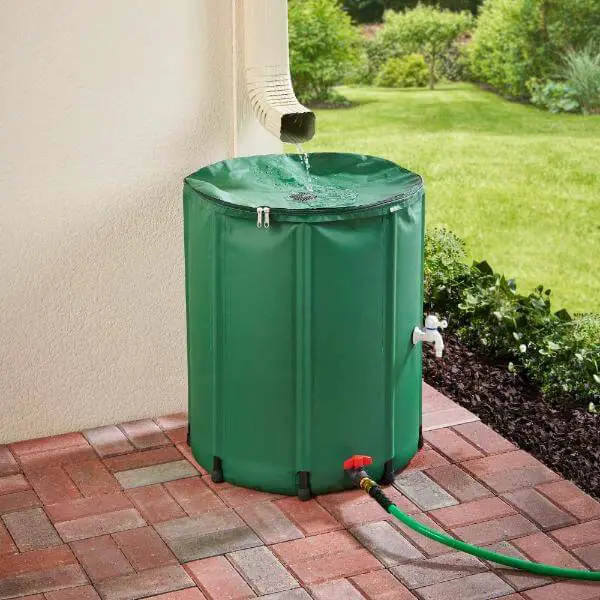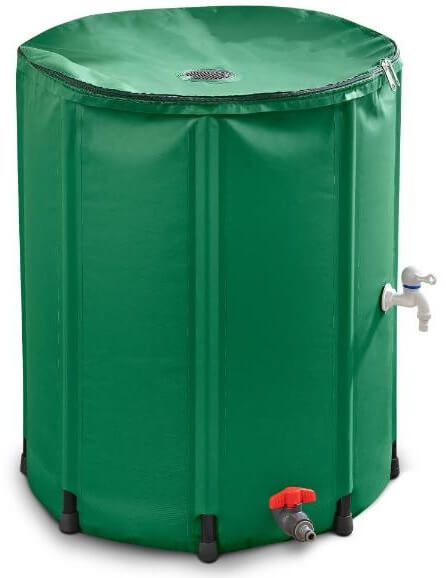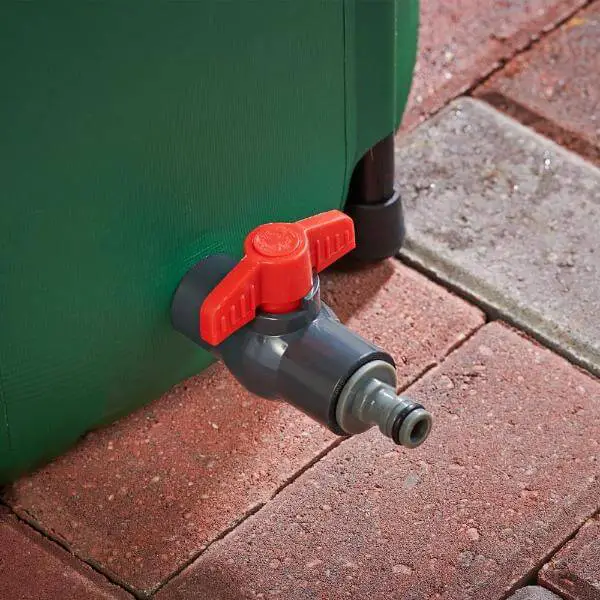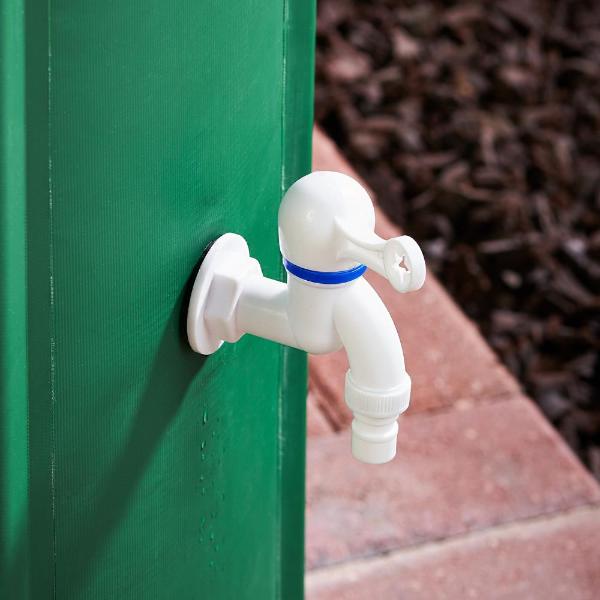This is the 50-gallon rain barrel that stores and saves rainwater yet collapses for easy storage.
Made of 1,000 denier polyester fabric with PVC coating, the rain barrel has a lightweight frame that allows one to set it up and pack it away easily.



It collects and conserves rainwater for use in your garden or ornamental plants and contains an integrated hose that directs excess rainwater away when the barrel is full.



It also has a quick-connect spigot, overflow connector, and hose adapter.
With two handles. 271/2″ H x 231/2″ Diameter. (6 lbs.)
As climate change continues to impact weather patterns and water scarcity becomes an increasing concern, sustainable water management practices are gaining importance.
One such practice gaining traction among eco-conscious gardeners is the utilization of rain barrels to water gardens. Rain barrels offer a simple yet effective way to collect rainwater, reducing dependency on municipal water supplies and conserving resources.
Let’s delve into the benefits of rain barrels for watering gardens and provide a comprehensive guide on how to set up and maintain a rain barrel system.
Benefits of Rain Barrels:
- Water Conservation: Rain barrels collect rainwater that would otherwise run off into storm drains, reducing the strain on municipal water supplies during dry spells.
- Cost Savings: By using harvested rainwater, gardeners can significantly reduce their water bills, especially during peak watering seasons.
- Nutrient-Rich Water: Rainwater is naturally soft and free from the chemicals found in tap water, making it ideal for watering plants. It also contains trace minerals that benefit plant growth.
- Environmental Impact: By decreasing reliance on treated water, rain barrels help reduce energy consumption and greenhouse gas emissions associated with water treatment and distribution.
- Stormwater Management: Rain barrels mitigate stormwater runoff, which can help prevent soil erosion and alleviate pressure on local drainage systems during heavy rainfall events.
Setting Up a Rain Barrel System:
- Choosing the Right Barrel: Select a food-grade barrel or container with a capacity ranging from 50 to 100 gallons. Ensure that the barrel has a tight-fitting lid to prevent mosquito breeding and debris from entering.
- Placement: Position the rain barrel beneath a downspout from your roof to capture rainwater efficiently. Use a stable base or platform to elevate the barrel for easy access to the spigot.
- Installing a Diverter: Consider installing a rain diverter or downspout diverter kit to direct water from the downspout into the barrel while allowing excess water to bypass the system during heavy rainfall.
- Overflow Management: Attach an overflow hose or redirect excess water from the barrel to a designated drainage area to prevent overflow and potential water damage.
- Securing the System: Ensure that the rain barrel is securely anchored to prevent tipping, especially in windy conditions. Regularly inspect the system for leaks or damage and make necessary repairs.
Maintaining Your Rain Barrel System:
- Regular Cleaning: Clean the inside of the rain barrel annually to remove sediment, algae, and other debris that may accumulate over time. Use a solution of mild detergent and water or a vinegar-water mixture for cleaning.
- Mosquito Control: Install a fine mesh screen or cover over the barrel’s inlet to prevent mosquitoes from breeding in standing water. Additionally, consider adding mosquito dunks or granules containing Bacillus thuringiensis (Bt) to kill mosquito larvae.
- Winterization: In colder climates, drain the rain barrel and disconnect it from the downspout before the onset of freezing temperatures to prevent damage from ice expansion. Store the barrel upside down or in a sheltered location until spring.
Tips for Maximizing Efficiency:
- Use a soaker hose or drip irrigation system connected to the rain barrel to deliver water directly to the base of plants, minimizing evaporation and water waste.
- Harvest rainwater from multiple downspouts or connect multiple rain barrels in series to increase water storage capacity.
- Incorporate a first flush diverter or debris filter to divert the initial runoff, which may contain contaminants from the roof, away from the rain barrel.
- Monitor water levels regularly and supplement with municipal water as needed, especially during prolonged dry spells.
Rain barrels offer a sustainable solution for garden watering, allowing homeowners to harness nature’s bounty while reducing water consumption and promoting environmental stewardship. By implementing a rain barrel system, gardeners can not only beautify their landscapes but also contribute to water conservation efforts and mitigate the impacts of urban stormwater runoff. With proper installation and maintenance, rain barrels can serve as invaluable tools in creating vibrant and resilient gardens in an increasingly water-conscious world.